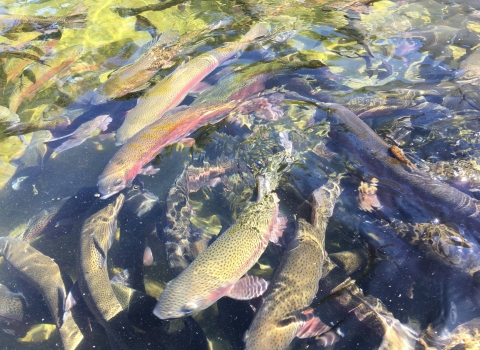Designed to halt widening destruction of fragile arctic migratory bird breeding habitat caused by exploding populations of lesser snow and Ross geese, the measures were implemented on Feb. 16, but were withdrawn in May after a legal challenge.
The Service has since begun work on an Environmental Impact Statement that will determine its long-term management strategy for overabundant lesser snow and Ross geese populations, as well as the rapidly increasing greater snow goose population. A draft EIS is expected to be completed in the Spring of 2000, with a final EIS anticipated next summer. Congress action will not affect the Services work on the EIS.
Concerned that the length of the EIS process would leave the Service and state wildlife agencies without the ability to take action next spring, Rep. Jim Saxton, R-N.J., chairman of the House Resources Subcommittee on Fisheries and Wildlife, introduced legislation in July that reinstated the rules. The legislation gives states the ability to take measures to reduce light goose populations pending completion of the EIS, thus preventing a delay that only compounds the problem. The legislation was approved by Congress on Nov. 10, and signed by President Clinton on Nov. 24.
"We appreciate the support of Chairman Saxton and other members of Congress for our efforts to protect these priceless breeding grounds from further devastation. We have long understood the need to take action and have been working to implement a long-term management strategy as quickly as possible" said Service Director Jamie Rappaport Clark. "Our work on the EIS will go on, but the legislation gives states the ability to act in the interim to protect the priceless arctic habitat."
The measures give states in the Central and Mississippi Flyways the flexibility to allow the use of normally prohibited electronic goose calls and unplugged shotguns during the remaining weeks of their light goose seasons in the spring, provided that other waterfowl and crane seasons have been closed. States have also been given the authority to implement a conservation order under the Migratory Bird Treaty Act that would allow hunters to take light geese after March 10, outside of traditional migratory bird hunting season frameworks. Both rules give states a better opportunity to increase their light goose harvests.
Fourteen states implemented all or part of the population control measures last year, contributing to a harvest of mid-continent light geese estimated at more than 1.07 million birds for the 1998-99 season. That harvest represents a 46 percent increase over the 730,000 birds harvested in the Central and Mississippi Flyways during the previous season, when no conservation measures were taken. Estimates provided by participating states and compiled by the Service indicate that the special harvest provisions resulted in a combined harvest of more than 438,000 birds.
Increasing agricultural and refuge development along waterfowl flyways through the Midwest and South has provided light geese with ample forage during their yearly migrations. As a result, adult mortality rates for light geese have fallen steadily over the past three decades, triggering explosive population growth.
Annual winter population counts of mid-continent light geese estimate that the population has more than tripled in the past 30 years, from just over 800,000 birds in 1969 to approximately 2.8 million birds last winter. The fragile Canadian arctic, with its short growing season, cannot support populations of that size. For example, large areas of the breeding grounds around Hudson Bay have been denuded of all vegetation by geese through overgrazing, a situation that scientists believe may also be contributing to the decline of breeding populations of other migratory bird species that share the breeding grounds and winter in the United States.
The Bills provisions take effect with the Prsidents signature. The Service will publish a future notice in the Federal Register advising states of their ability to participate in the conservation measures. State wildlife commissions must then decide whether to participate, and under what circumstances.
The U.S. Fish and Wildlife Service is the principal Federal agency responsible for conserving, protecting, and enhancing fish, wildlife and plants and their habitats for the continuing benefit of the American people. The Service manages the 93-million-acre National Wildlife Refuge System comprised of more than 500 national wildlife refuges, thousands of small wetlands, and other special management areas. It also operates 66 national fish hatcheries, 64 fish and wildlife management assistance offices and 78 ecological services field stations. The agency enforces Federal wildlife laws, administers the Endangered Species Act, manages migratory bird populations, restores nationally significant fisheries, conserves and restores wildlife habitat such as wetlands, and helps foreign governments with their conservation efforts. It also oversees the Federal Aid program that distributes hundreds of millions of dollars in excise taxes on fishing and hunting equipment to state fish and wildlife agencies.
LinksMore information on snow geese from the Office of Migratory Bird Management


